A museum has a thousand objects in its possession, but sometimes just the right one is missing! Last winter when I was preparinga new showcase in the permanent exhibition on the Nobel Prize winner Paul Ehrlich, I didn’t have enough pieces to create a coherent presentation for the exhibit.
I wanted to illustrate Paul Ehrlich’s achievement in the field of medicine with documents and paraphernalia from his work, but didn’t find any appropriate objects in our collection. Nonetheless this significant scientist was to appear in our exhibition. He developed a cure for syphilis, founded modern cancer research, and brought many important, trendsetting research results to light.
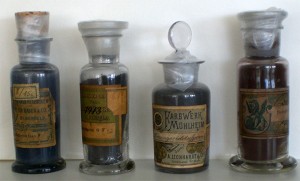
Jars of dye that Paul Ehrlich needed for his famous experiments with dye, Paul Ehrlich Institute, Langen
© photo: Christiane Bauer, Jewish Museum Berlin
So I began to search for suitable exhibit pieces and found my way to Hessen: both the Paul Ehrlich Institute in Langen and the Georg Speyer House in Frankfurt – Paul Ehrlich’s last and most significant workplace – have an impressive store of items related to his work and influence. But how to bring these objects to the museum in Berlin?
Next, I paid a visit to both institutions in order to examine the various objects and get a sense of their current locations. The Paul Ehrlich Institute as well as the Georg Speyer House responded very generously to my situation of need and we were able to negotiate a good solution: the relevant items would come to us on loan and fill the gaps in our showcases.
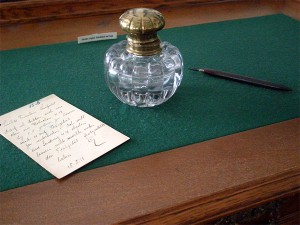
Inkwell and feather pen that Paul Ehrlich used to write out research results as well as to take notes, Paul Ehrlich Institute, Langen
© photo: Christiane Bauer, Jewish Museum Berlin
A few weeks later, once we had made the loan arrangements, agreed on the dates, and consulted with our restorers, I acted as courier, assembling the following items for the transport of the fragile objects:
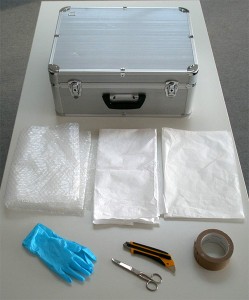
Courier case lined with foam, bubble wrap, thick plastic wrap, tissue paper, gloves, scissors and cutter, tape
© photo: Christiane Bauer, Jewish Museum Berlin
On site in Hessen I packed each individual collector’s item in the different layers of material. I needed sensitive fingertips and full control of my hands while handling the glass objects.
Most of all, the heavy and somewhat cumbersome crystal inkwell needed to be moved gently and well encased in plastic sheets and bubble wrap. One only has to think of the scarcity value of these things and the possible catastrophes that can happen to glass to break out in a sweat at this delicate undertaking.
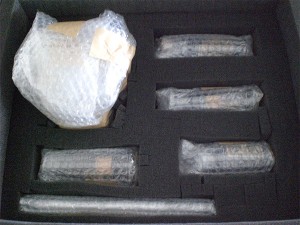
At the end the packed travelling case looked like this.
© photo: Christiane Bauer, Jewish Museum Berlin
Swathed in a lot of bubble wrap and embedded in foam, all the objects were now protected from unwanted jolts, vibrations, and collisions with one another. A passerby could hardly guess what was hidden beneath all this lush packaging.
I returned to Berlin heavily laden with the valuable objects on loan.
As I changed trains at the main station in Frankfurt-am-Main, other passengers looked curiously at my silver carrying case. Because of the weight of the items inside, it caused me to bend over slightly, but I gripped it very tightly – apparently an unusual sight even in that banking metropolis. Even though I wasn’t transporting bundles of euro notes, I was still travelling with treasures: these pieces that belonged to Paul Ehrlich tell a unique story and are thus truly priceless.
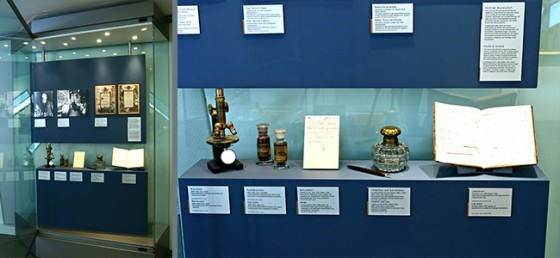
Safely arrived in Berlin, the items inside the resulting showcase.
© photo: Gelia Eisert, Jewish Museum Berlin
To learn more about Paul Ehrlich, pay a visit to our permanent exhibition before these loaned objects are returned to their home collections.
Christiane Bauer, Exhibitions
We wish warmly to thank all the lenders:
Paul Ehrlich Institute, Langen (microscope, jars of dye, notepads, inkwell with feather pen)
Georg Speyer House (laboratory book)
Rockefeller University Archives, New York (images)